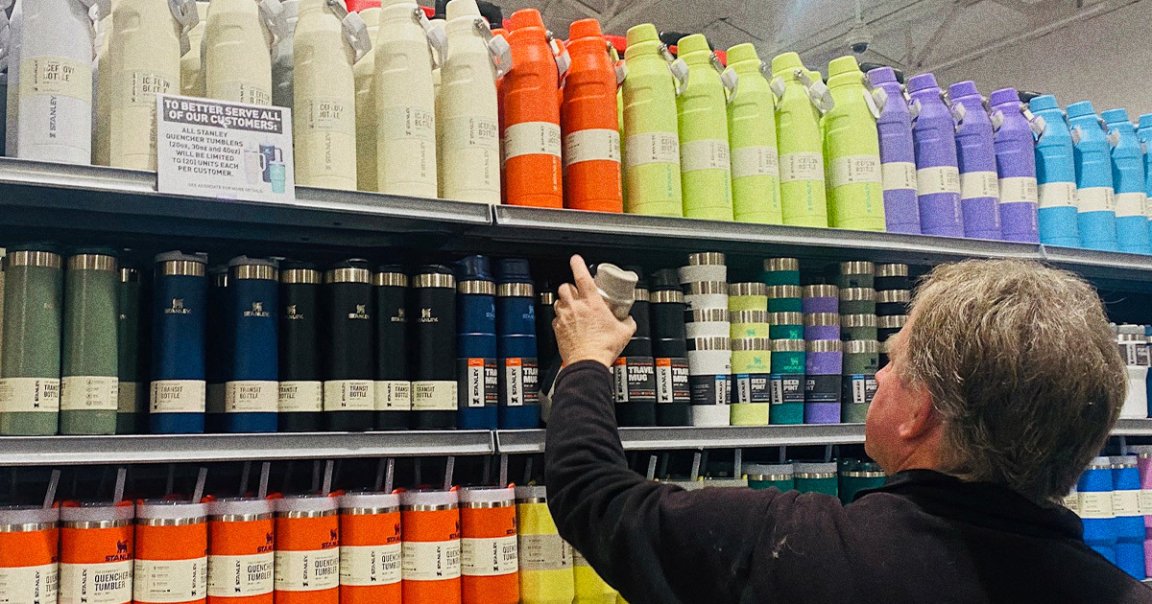
Last week, Stanley — the company behind those massive, candy-colored, and inexplicably viral “Quencher” cups that recently spawned a whiplash TikTok fervor when buyers discovered that the beverage tumblers could keep drinks chilled for a bonkers amount of time — admitted that its wildly popular hunks of insulation witchcraft contain a certain amount of lead, the infamously toxic heavy metal.
“Our manufacturing process currently employs the use of an industry-standard pellet to seal the vacuum insulation at the base of our products; the sealing material includes some lead,” a Stanley spokesperson confirmed in a statement to CNN. “Once sealed, this area is covered with a durable stainless steel layer, making it inaccessible to consumers.”
So, yes, lead is present in Stanley Quenchers. And though the company insists that lead isn’t included in any part of the cup designed to come in contact with human skin or contained beverages, the revelation does raise a new question: how worried should Quencher-clutchers be about lead poisoning?
The answer, it seems, is something along the lines of “not very” — but the risk isn’t zero.
Per CNN, the lead in question is trapped beneath behind a layer of stainless steel; as long as your small child-size mug stays intact, you should be fine. But if that stainless steel somehow gets broken? You’d risk coming into contact with the lead previously confined underneath.
Though a Stanley spokesperson assured TODAY.com that lead poisoning via broken Quencher is “rare,” the company confirmed that it would indeed be possible if the cups became damaged.
To be fair, Stanley isn’t the only water bottle maker that uses lead in its products. But whether the lead-laced pellet at the heart of the controversy is “industry standard” or not, experts are weighing in to issue warnings.
Lead “is still all around us, often at dangerous enough levels to cause significant harm,” Jenna Forsyth, an epidemiologist and environmental scientist at the Stanford University School of Medicine, told TODAY.com.
Forsyth even offered a personal anecdote of drinking cup-enabled lead harm.
“One family I worked with had a young child who got lead poisoning from ingesting oatmeal,” she told TODAY.com, “that he had playfully smashed with the bottom of a water bottle where lead was exposed.”
Another expert, assistant professor of pediatrics at Columbia University Vicki Iannotti, warned TODAY.com that the most serious concern would be “repeated exposure” to lead, which in this case would entail the repeated use of a broken Quencher.
There you have it, folks. Lead poisoning via Stanley is unlikely, but it could happen. Treat yours gently, and if you break it, toss it. We know it might be hard to get a new one — but trust us, the clout wouldn’t be worth it.
More on Quencher culture: Stanley Admits Its TikTok-famous Mugs Are Made with Lead after All